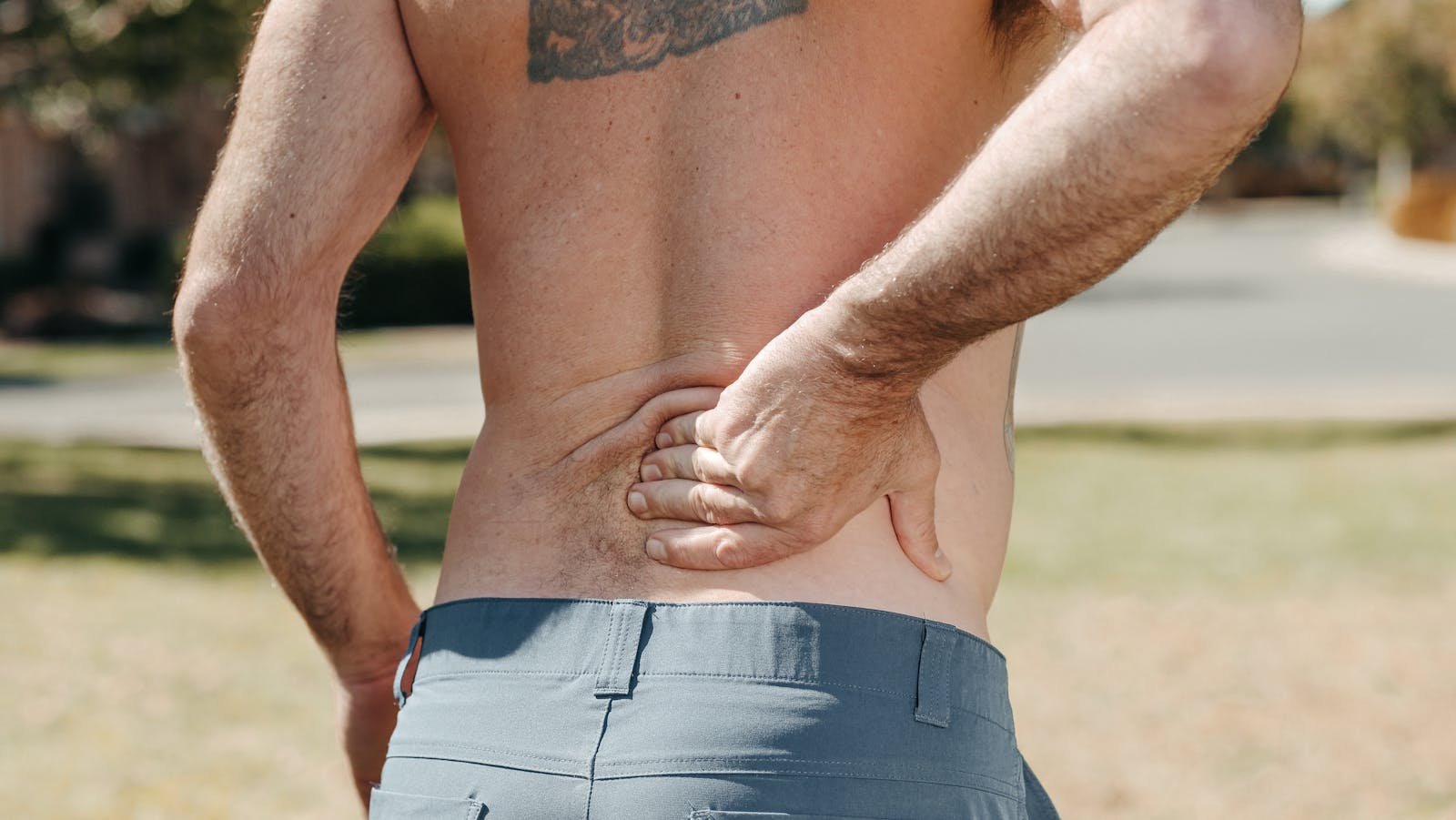Understanding Severe Back Pain and Its Causes
Severe back pain can be debilitating, affecting daily life and movement. This condition may occur in various forms, including lower back pain, upper back pain, and mid-back pain, each with its distinct causes and treatment options. Severe back pain is often linked to structural problems, muscle strains, nerve compression, or underlying health conditions.
Severe back pain can be acute, lasting a few days or weeks, or chronic, persisting for more than three months. When pain becomes intense, it’s crucial to identify the cause and seek effective treatment.
Lower Back Pain Severe: Causes and Risk Factors
Lower back pain, particularly severe lower back pain, is common and can stem from various factors:
- Muscle or Ligament Strains: Repetitive lifting or awkward movements can strain muscles and ligaments, leading to severe lower back pain.
- Herniated Discs: Discs act as cushions between vertebrae, but when they rupture or bulge, they can press on nearby nerves, causing intense pain.
- Sciatica: Compression of the sciatic nerve can lead to severe pain that radiates from the lower back down through the legs.
- Spinal Stenosis: Narrowing of the spine can put pressure on nerves, resulting in lower back pain that becomes severe when walking.
- Scoliosis: Abnormal spine curvature can lead to mid or lower back pain, especially in severe cases.
For those with severe lower back pain when walking, sciatica, or spinal stenosis are often the culprits. This can make standing or walking long distances challenging and painful.
Symptoms of Severe Back Pain Based on Location
Severe back pain symptoms vary depending on the affected area of the back.
Lower Back Pain Severe Symptoms
- Sharp, stabbing pain or throbbing in the lower back.
- Pain that radiates to the buttocks, thighs, or legs.
- Difficulty standing, walking, or bending forward.
- Intense pain after sitting for prolonged periods.
Upper Back Pain Severe Symptoms
- Muscle stiffness in the shoulders or neck.
- Pain that worsens with certain movements or after sitting for extended periods.
- Sharp pain radiating around the chest or to the arms.
Middle Back Pain Severe Symptoms
- A dull ache or burning sensation in the mid-back.
- Pain exacerbated by twisting or lifting.
- Symptoms that worsen with deep breaths or certain postures.
Back Pain Severe at Night
Experiencing severe back pain at night can significantly impact sleep quality. Nighttime back pain may indicate:
- Inflammatory conditions like ankylosing spondylitis.
- Disc degeneration that intensifies when lying down.
- Tumors in the spine, which are rare but can cause severe pain that worsens at night.
Severe Back Pain and Periods: Lower Back Pain Severe During Menstrual Cycle
For many women, severe lower back pain during periods is common and often linked to:
- Hormonal fluctuations that cause muscles and ligaments to relax, putting more pressure on the spine.
- Menstrual cramps that radiate pain to the back.
- Endometriosis or other gynecological conditions.
Treatments for Severe Back Pain

Treating severe back pain often involves a combination of approaches. Here’s a look at the available options:
Medications for Back Pain Severe
- Over-the-Counter Pain Relievers: NSAIDs like ibuprofen can reduce inflammation and alleviate pain.
- Prescription Medications: For more severe pain, doctors may prescribe muscle relaxants, opioids, or corticosteroids, though these come with potential side effects.
- Topical Analgesics: Creams or patches that contain ingredients like lidocaine may provide localized relief for certain types of back pain.For more information, the American Academy of Orthopaedic Surgeons provides a comprehensive guide on pain relief medications here.
Physical Therapy and Exercise for Severe Back Pain Relief
Physical therapy is a common and effective approach for managing severe back pain. It helps to strengthen the muscles around the spine, improving stability and reducing strain. Exercises may include:
- Stretching Exercises: Gentle stretches can relieve tension and improve flexibility, particularly in the lower back.
- Strengthening Exercises: Targeted exercises for the core muscles support the spine, which can alleviate pain and prevent further injury.
- Low-Impact Aerobics: Walking, swimming, and cycling can reduce pain over time without putting too much strain on the back.
For those with severe back pain due to lower back pain spasms, physical therapy may gradually improve symptoms and reduce muscle spasms.
| Exercise | Benefit |
|---|---|
| Cat-Cow Stretch | Alleviates lower and middle back pain |
| Bridge Pose | Strengthens lower back muscles |
| Child’s Pose | Relieves tension in the back |
| Knee-to-Chest Stretch | Reduces stiffness in the lower back |
Chiropractic and Alternative Therapies
Chiropractic care can be effective for severe lower back pain or mid-back pain by realigning the spine. Chiropractors use spinal adjustments to reduce nerve pressure and enhance mobility. In addition, acupuncture, massage therapy, and yoga have shown positive results in alleviating back pain in many patients.
Also Read: Understanding Low Back Pain Causes: A Guide for Lasting Relief
Lifestyle Modifications for Managing Severe Back Pain
Making lifestyle adjustments can also help manage severe back pain:
- Posture Correction: Proper posture can prevent worsening of pain, especially for those with severe lower back pain.
- Ergonomic Adjustments: Investing in an ergonomic chair and workstation setup can reduce strain on the back.
- Weight Management: Maintaining a healthy weight reduces stress on the back, lowering the risk of pain flare-ups.
When to Seek Medical Help for Severe Back Pain
Severe back pain may require medical intervention if it:
- Persists beyond a few weeks despite home treatment.
- Is accompanied by symptoms like numbness or tingling in the legs, bowel or bladder issues, or fever.
- Becomes severe after a traumatic event, such as a fall or accident.
Advanced Treatments for Severe Back Pain
If conservative treatments like medication and physical therapy don’t provide sufficient relief, more advanced options may be considered. These can include injections, surgical options, and other medical interventions.
Injections for Severe Back Pain
Injections are often recommended for those experiencing intense or chronic back pain that doesn’t respond well to other treatments. Some common types include:
- Epidural Steroid Injections: These are commonly used for conditions like herniated discs, spinal stenosis, or sciatica. They deliver anti-inflammatory medication directly around the spine, helping to reduce pain and inflammation.
- Facet Joint Injections: These injections target the small joints between each vertebra. They are typically used for arthritis-related pain in the lower or upper back.
- Nerve Block Injections: Nerve blocks help manage pain by blocking specific nerves from sending pain signals to the brain. They’re useful for patients with severe or chronic pain that radiates into the legs or arms.
Surgical Options for Severe Back Pain
Surgery is generally considered a last resort for severe back pain, typically when other treatments have been exhausted and the pain remains debilitating. Some common surgical options include:
- Discectomy: Removal of a portion of a herniated disc to relieve nerve compression.
- Spinal Fusion: Involves joining two or more vertebrae to stabilize the spine and alleviate pain caused by motion between vertebrae.
- Laminectomy: Removal of part of the vertebra to enlarge the spinal canal and relieve pressure on nerves, often used for spinal stenosis.
Surgical intervention is usually recommended only when there is clear evidence of structural issues that can be corrected, such as severe herniated discs, fractures, or deformities.
For more details on surgical procedures, you may refer to resources provided by the American Academy of Orthopaedic Surgeons.
Neuromodulation and Electrical Stimulation
Spinal Cord Stimulation (SCS) is an advanced treatment for chronic back pain where electrical impulses are sent to the spinal cord, helping to block pain signals before they reach the brain. This treatment is particularly effective for nerve-related pain. Patients with long-standing back pain who have not found relief through other treatments may benefit from SCS after evaluation.
Chronic Pain Management Techniques for Severe Back Pain
For individuals dealing with chronic, severe back pain, ongoing management techniques are essential to improve quality of life. These techniques can include a range of medical, psychological, and alternative approaches.
Cognitive Behavioral Therapy (CBT) and Pain Management Programs
Cognitive-behavioral therapy is a psychological approach that helps patients manage pain by changing how they think and respond to it. Studies show that CBT can reduce the intensity of pain and improve mental well-being for people with chronic back pain.
Comprehensive pain management programs often incorporate CBT, physical therapy, and education about the condition, empowering patients to take control of their pain.

Medications for Long-Term Management of Severe Back Pain
- Antidepressants: Tricyclic antidepressants like amitriptyline are often used for chronic back pain management. They are thought to impact pain pathways in the central nervous system, which can reduce the perception of pain.
- Anticonvulsants: Medications such as gabapentin are useful for nerve pain, helping to manage pain that radiates into the legs or arms.
- Opioids: While opioids are effective for severe pain, they are generally reserved for short-term use due to the risk of dependence and side effects.
Alternative and Holistic Approaches
- Acupuncture: This ancient Chinese practice involves inserting thin needles into specific points on the body to relieve pain. Research has shown that acupuncture can help reduce chronic back pain in some people.
- Massage Therapy: Regular massage can improve circulation, relieve muscle tension, and reduce pain in the back. Techniques such as myofascial release target the connective tissue to relieve tension.
- Yoga and Tai Chi: Gentle, low-impact exercises like yoga and tai chi can increase flexibility, strength, and overall body awareness. They are particularly beneficial for individuals with chronic, severe back pain, as they promote spinal alignment and stress reduction.
Learn more about the benefits of acupuncture and holistic therapies on the National Center for Complementary and Integrative Health.
Lower Back Pain Severe When Walking: Tips for Relief
Lower back pain that becomes severe when walking can be particularly frustrating, as it limits mobility and affects daily activities. Here are some tips for managing severe lower back pain while walking:
- Use Supportive Footwear: Proper shoes with good arch support can reduce strain on the lower back. Shoes that absorb shock and stabilize the feet can alleviate pressure on the spine. Wearing the best shoes for feet and back pain can make a significant difference.
- Practice Good Posture: Keeping a neutral spine position while walking can help. Avoid slouching or leaning forward, as this can increase strain on the lower back.
- Take Breaks: If your pain becomes severe while walking, take frequent breaks. Sit or lean on a stable surface to relieve pressure from your back.
Table of Medications for Severe Back Pain Relief
| Medication | Purpose | Potential Side Effects |
|---|---|---|
| NSAIDs (Ibuprofen) | Reduces inflammation | Stomach irritation, ulcers |
| Muscle Relaxants | Relieves muscle spasms | Drowsiness, dizziness |
| Opioids | Severe pain relief | Dependence, constipation, sedation |
| Antidepressants (TCAs) | Chronic pain management | Weight gain, dry mouth, drowsiness |
| Anticonvulsants (Gabapentin) | Nerve pain relief | Fatigue, drowsiness, coordination issues |
Severe Back Pain in Morning: Causes and Remedies
Waking up with severe back pain can be a sign of conditions like arthritis or disc degeneration, as the spine may become compressed overnight.
Remedies for Severe Morning Back Pain
- Stretches Before Getting Out of Bed: Gentle stretches such as pulling your knees to your chest or stretching your arms overhead can relieve stiffness.
- Use of Firm Mattress: A medium-firm mattress is recommended, as it supports the spine better than a soft one.
- Warm Showers or Heating Pads: Applying heat to the back in the morning can help relax tight muscles and alleviate pain.
For more mattress recommendations for back pain, visit the American Chiropractic Association.
Preventing Severe Back Pain: Tips for a Healthy Back
Preventing back pain involves lifestyle adjustments, strengthening exercises, and mindful movement. Here are some actionable strategies for preventing severe back pain:
- Regular Exercise: Strengthening the core muscles that support the spine can prevent strain. Exercises such as planks, bridges, and wall sits are particularly effective for back stability.
- Practice Good Lifting Techniques: Lifting with the legs rather than the back can prevent injury. Avoid twisting while lifting and hold heavy objects close to the body.
- Maintain a Healthy Weight: Excess weight, especially around the abdomen, can strain the back muscles and spine. A balanced diet and regular physical activity can aid in maintaining a healthy weight.
- Stay Hydrated: Proper hydration is crucial for disc health. Spinal discs are made of a jelly-like substance, which can dehydrate, causing reduced flexibility and resilience.
- Avoid Prolonged Sitting: Sitting for long periods can strain the lower back. Take breaks, stand, or do a quick stretch every hour to maintain spinal alignment.
When Severe Back Pain Requires Immediate Medical Attention
Certain symptoms alongside severe back pain can indicate serious underlying issues that require immediate medical intervention, including:
- Loss of Bowel or Bladder Control: This can indicate cauda equina syndrome, a rare but serious condition requiring emergency surgery.
- Fever and Back Pain: Fever along with back pain can be a sign of infection.
- Unexplained Weight Loss: Sudden weight loss with back pain could be a symptom of spinal tumors or other systemic conditions.
In Conclusion: Severe back pain can be challenging, but with a multi-faceted approach, relief is possible. Combining physical therapy, lifestyle adjustments, and, when necessary, medical interventions can help manage and prevent severe back pain effectively.




